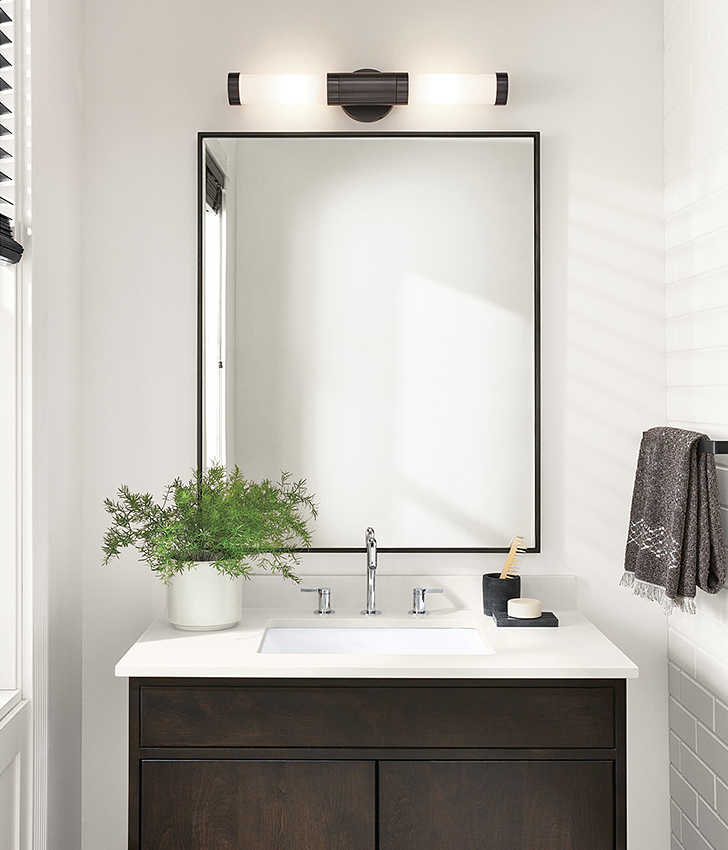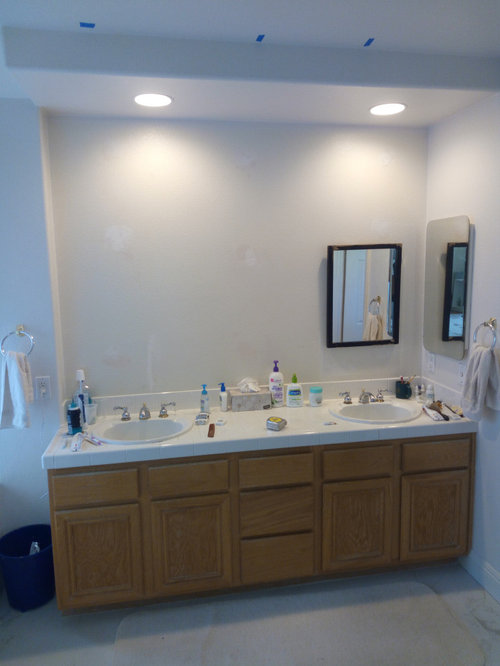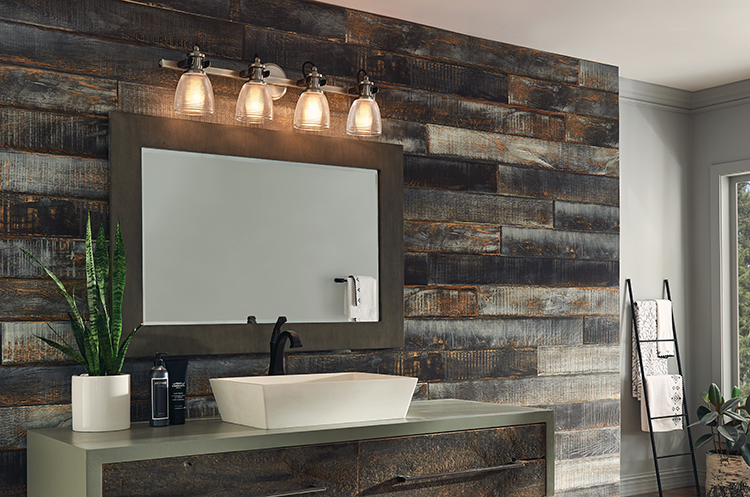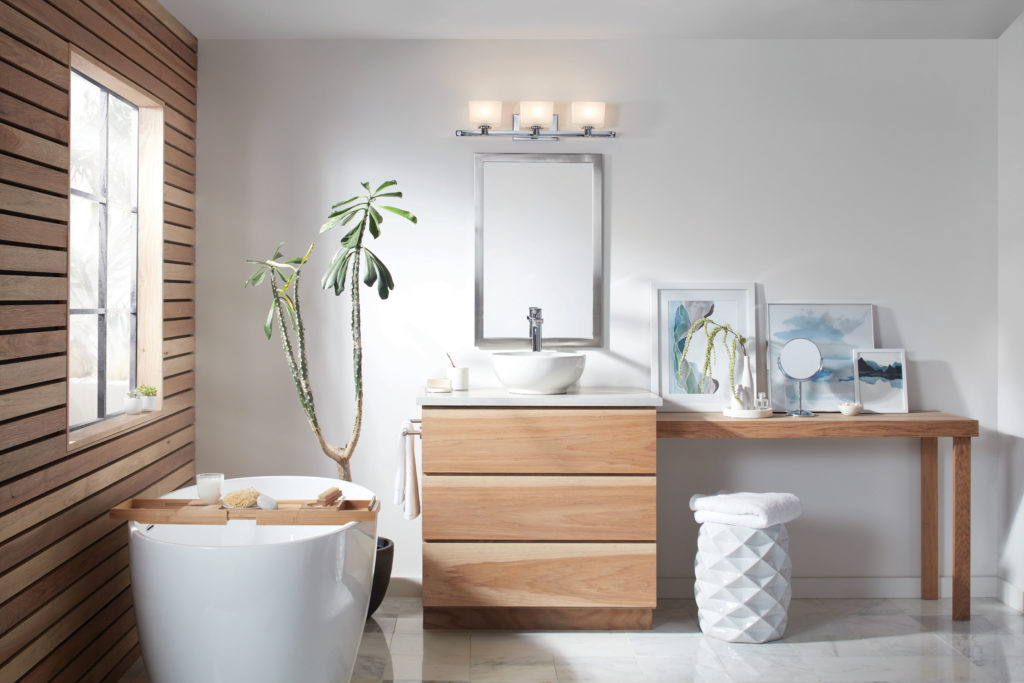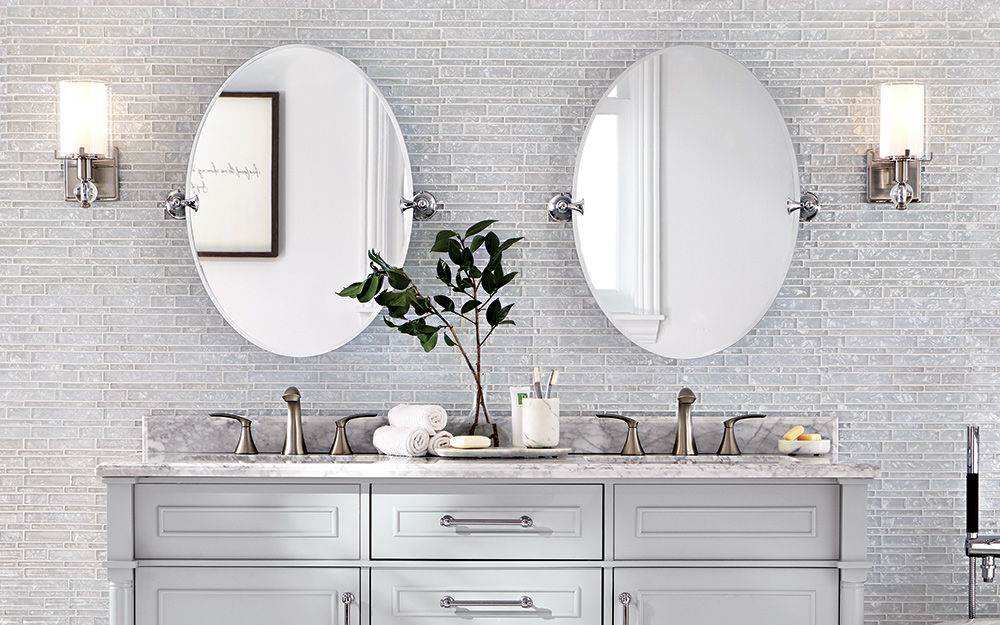Bathroom lighting above the vanity plays a crucial role in both functionality and aesthetics. Proper lighting ensures that tasks like shaving, applying makeup, and other grooming activities can be performed with ease and precision. Additionally, well-chosen lighting fixtures can enhance the overall ambiance and style of the bathroom, making it a more pleasant space to spend time in.
One of the key considerations when selecting bathroom lighting above the vanity is the type of light fixture. There are several options to choose from, including wall sconces, vanity light bars, and pendant lights. Each type has its advantages and can contribute differently to the bathroom’s look and functionality. Wall sconces, for instance, can provide even lighting on both sides of the mirror, reducing shadows on the face. Vanity light bars, mounted above the mirror, can offer a broad and even spread of light, ideal for larger mirrors. Pendant lights, while less common, can add a touch of elegance and style, especially in more modern or eclectic bathroom designs.

The placement of the lighting fixtures is another critical factor. For optimal lighting, fixtures should be installed at eye level, roughly 66 inches from the floor. This placement helps to minimize shadows and provides the most flattering and functional light. If using sconces, they should be placed on either side of the mirror, approximately 36 to 40 inches apart. For light bars or strips, centering the fixture above the mirror ensures even illumination.
The type of bulb used in bathroom lighting above the vanity is equally important. LED bulbs are a popular choice due to their energy efficiency, long lifespan, and ability to produce bright, clear light. When selecting LED bulbs, it’s important to consider the color temperature, measured in Kelvins (K). For bathroom vanity lighting, a color temperature between 2700K and 3000K provides a warm, inviting light, while 3500K to 4000K offers a neutral white light that’s excellent for detailed tasks.
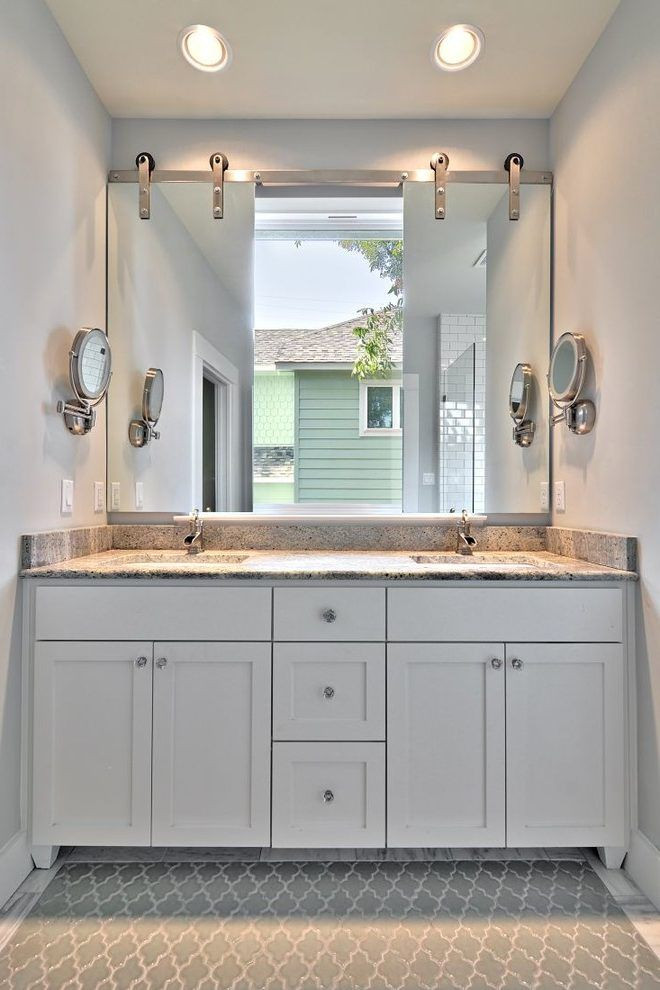
Dimmable lighting is another feature to consider for bathroom vanities. Installing dimmer switches allows you to adjust the light intensity based on your needs and the time of day. Bright light can be used for tasks requiring precision, while a softer, dimmed light can create a relaxing atmosphere for unwinding in the evening.
The style of the lighting fixture should complement the overall design of the bathroom. For a modern bathroom, sleek and minimalist fixtures with clean lines are ideal. In contrast, a traditional bathroom may benefit from more ornate and classic fixtures. The materials and finishes of the fixtures, such as brushed nickel, chrome, or antique brass, should coordinate with other bathroom elements like faucets, hardware, and mirror frames.

Consideration of the bathroom’s size and layout is also crucial when planning vanity lighting. In smaller bathrooms, a single, well-placed light fixture might suffice, while larger bathrooms may require multiple fixtures to ensure adequate lighting. Additionally, the height and depth of the vanity and mirror should influence the size and type of lighting chosen to ensure proportionate and effective illumination.
For those seeking to add a touch of luxury, integrated LED mirrors are a stylish and functional option. These mirrors have built-in lighting that provides even illumination without the need for separate fixtures. They often come with additional features like defoggers, touch sensors, and adjustable color temperatures, offering both convenience and sophistication.
Another innovative lighting option is smart lighting, which allows for control via smartphone or voice assistants like Alexa or Google Assistant. Smart bulbs and fixtures can change color temperatures and dim at the touch of a button or a voice command, providing flexibility and ease of use.
In addition to primary vanity lighting, accent lighting can enhance the bathroom’s overall aesthetic. Recessed lighting, strip lighting, or even under-cabinet lighting can add layers of light and highlight architectural features or decor elements, creating a more dynamic and inviting space.
Natural light should not be overlooked when planning bathroom lighting. If your bathroom has windows, consider how natural light interacts with artificial lighting. Maximizing natural light during the day can reduce the need for artificial lighting and create a brighter, more open space. However, it’s essential to have adequate artificial lighting for evenings and cloudy days.
When installing bathroom lighting above the vanity, safety should always be a priority. Ensure that all fixtures and bulbs are rated for use in damp or wet environments to prevent electrical hazards. Professional installation is recommended for complex lighting setups or if new wiring is required.
Energy efficiency is another consideration for bathroom lighting. Opting for LED bulbs and energy-efficient fixtures can significantly reduce electricity usage and costs. Many modern fixtures come with energy ratings and certifications that make it easy to choose eco-friendly options.
Finally, the ease of maintenance should be taken into account. Choose fixtures and bulbs that are easy to clean and replace. LED bulbs, while more expensive upfront, last much longer than traditional incandescent or fluorescent bulbs, reducing the frequency of replacements and the associated hassle.
Common Mistakes to Avoid
One common mistake when selecting bathroom lighting above the vanity is choosing fixtures that are too small or too large for the space. Proper proportion is essential for both aesthetics and functionality. Ensure the fixtures are appropriately sized to match the vanity and mirror.
Another mistake is overlooking the importance of color temperature. Using bulbs that are too warm or too cool can distort colors and affect the appearance of makeup and skin tones. Aim for a color temperature between 2700K and 4000K for the most accurate and flattering light.
Improper placement of fixtures can lead to uneven lighting and shadows. Avoid placing fixtures too high or too low. Ideally, lights should be at eye level and evenly spaced to minimize shadows and provide consistent illumination.
Choosing fixtures solely based on style without considering functionality can result in inadequate lighting. While aesthetics are important, ensure the fixtures provide enough light for tasks like shaving and applying makeup.
Neglecting dimmable options can limit the versatility of your bathroom lighting. Dimmers allow you to adjust the light intensity based on your needs, providing bright light for tasks and softer light for relaxation.
Failing to account for natural light can lead to an overlit or underlit bathroom. Consider how natural light interacts with your artificial lighting and plan accordingly to create a balanced and well-lit space throughout the day.
What type of lighting fixture is best for bathroom vanity lighting?
The best type of lighting fixture for a bathroom vanity depends on your specific needs and preferences. Wall sconces on either side of the mirror provide even lighting and minimize shadows, while vanity light bars offer broad, even light from above. Pendant lights can add a touch of style, but ensure they are positioned to provide adequate lighting.
How high should vanity lights be mounted?
Vanity lights should be mounted at eye level, approximately 66 inches from the floor. For sconces, place them on either side of the mirror, about 36 to 40 inches apart. This placement helps to minimize shadows and provides the most functional and flattering light.
What color temperature is best for bathroom vanity lighting?
A color temperature between 2700K and 4000K is best for bathroom vanity lighting. This range provides a warm to neutral white light that is flattering for skin tones and ideal for detailed tasks like applying makeup or shaving.
Are LED bulbs a good choice for bathroom vanity lighting?
Yes, LED bulbs are an excellent choice for bathroom vanity lighting. They are energy-efficient, have a long lifespan, and provide bright, clear light. When choosing LED bulbs, consider the color temperature to ensure the lighting is suitable for your needs.
Can I use dimmable lights in the bathroom?
Yes, using dimmable lights in the bathroom is a great idea. Dimmers allow you to adjust the light intensity, providing bright light for tasks and softer light for relaxation. Ensure your fixtures and bulbs are compatible with dimmer switches.
How can I incorporate natural light into my bathroom lighting plan?
To incorporate natural light into your bathroom lighting plan, consider the placement of windows and how they interact with your artificial lighting. Use window treatments that allow for adjustable light levels and complement natural light with artificial lighting that maintains a balanced and well-lit space throughout the day.
How to Get Your Bathroom Vanity Lighting Right
Vanity Lighting Ideas
Vanity Light,Bathroom Light Fixtures,Wall Sconce with Crystal
Related articles:
- Bathroom Lighting Atlanta
- Quirky Bathroom Lights
- Silver Bathroom Light Fixtures
- Install Bathroom Light Fixture No Junction Box
- Bathroom Light Bulb Keeps Blowing
- Bathroom Light Fixtures Toronto
- Victorian Bathroom Light Fixtures
- Nutone Bathroom Light Fan
- Nickel Bathroom Light Fixtures
- Bathroom Light Fixture With Exhaust Fan
